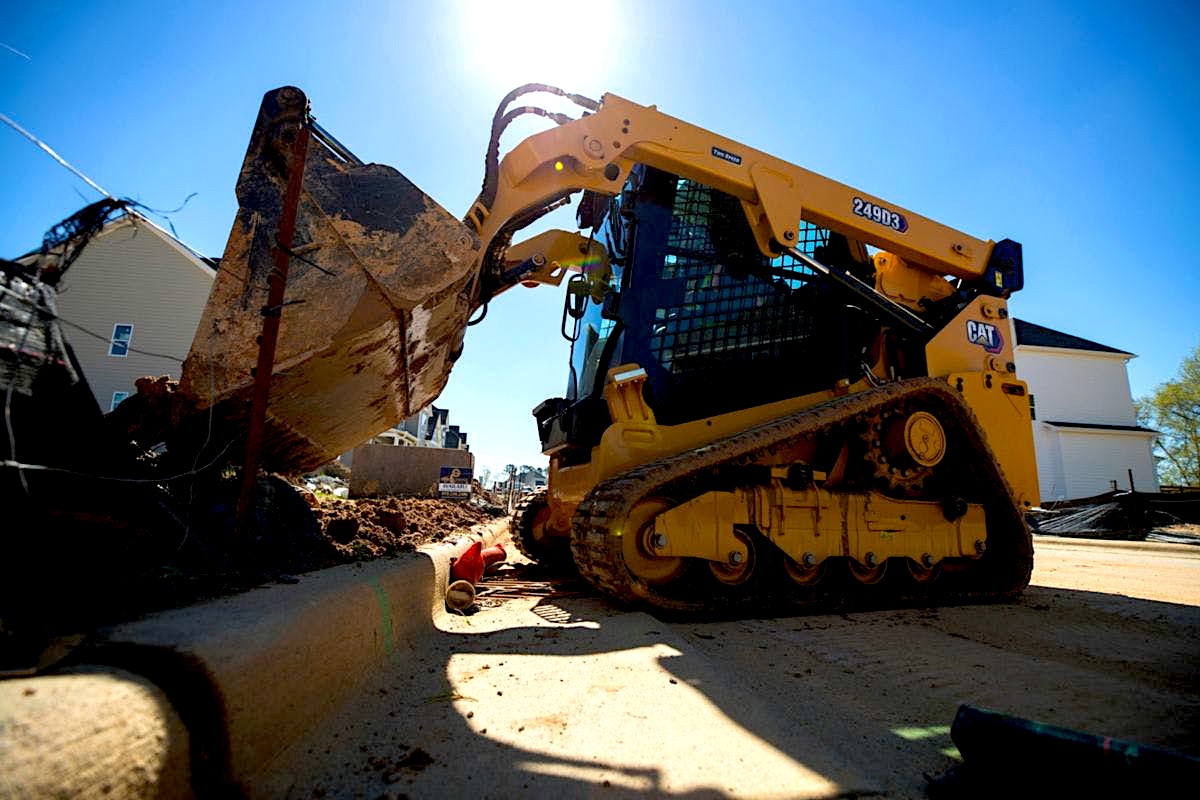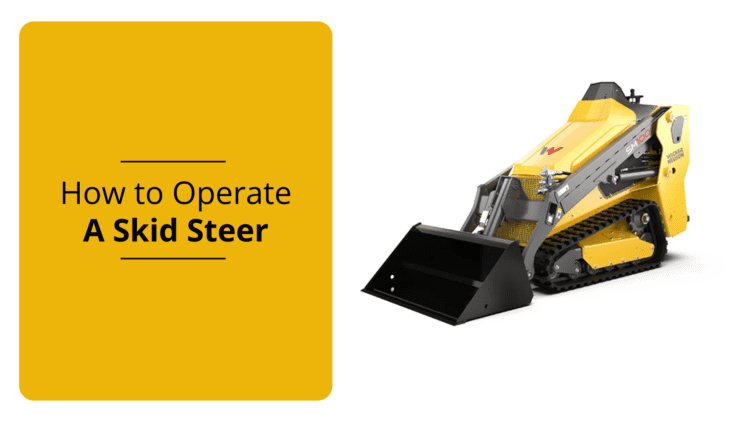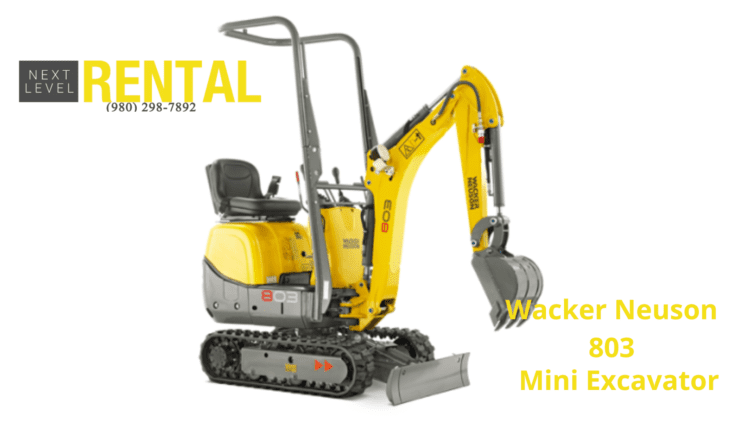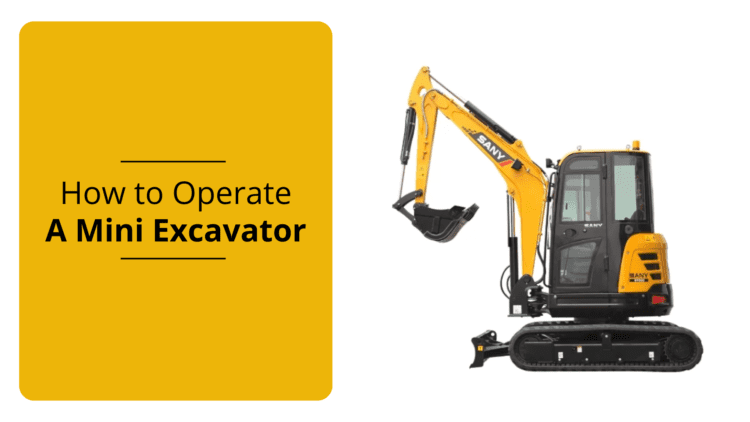Skid loaders are indispensable tools on construction sites, farms, and industrial facilities. With the right attachments, they efficiently handle tasks like digging, trenching, grading, and materials moving. Fortunately, mastering the operation of a skid loader is straightforward.
Outlined below are instructions for executing fundamental tasks with a skid loader. Since each model varies, refer to the operator’s manual for model-specific guidelines. Take time to acquaint yourself with the controls, safety mechanisms, warnings, and the machine’s weight capacity. Exceeding the rated operating capacity (ROC) can lead to tipping hazards.
Before Using A Skid Steer
Before engaging the machinery, it’s crucial to conduct a thorough pre-operation inspection. Avoid operating the skid steer if any maintenance or repairs are required.
When entering the cab, approach the seat facing forward. Utilize the grab bars by placing each hand securely on them and ascend the steps. Never attempt to manipulate the control levers while entering the cab.
How To Start A Skid Steer
To initiate the operation of most skid steers, adhere to these guidelines:
- Secure yourself by fastening the seat belt and lowering the safety bar.
- Ensure that the controls are positioned in neutral mode and engage the parking brake.
- Locate the starter control, usually situated in the upper right corner of the cab. Proceed by either turning the ignition key or pressing the start/stop button.
How To Control A Skid Steer
Skid steer loaders come with various control configurations, each offering unique advantages and suiting different operator preferences. The three main control patterns include the standard pattern, H pattern, and ISO pattern, each with its own set of controls:
- Standard:
- Steering: This pattern employs dual steering levers, one on each side, to control the drive functions.
- Lift and Tilt: Dual foot pedals are used to control the lift and tilt of the loader arms.
- H Pattern:
- Steering: Similar to the standard pattern, the H pattern utilizes dual steering levers for controlling the drive functions.
- Lift and Tilt: Instead of foot pedals, handles that hinge or pivot are employed to manipulate the lift and tilt of the loader arms.
- ISO:
- Steering: In this pattern, the left joystick is dedicated to controlling the drive functions, offering a single-handed steering experience.
- Lift and Tilt: The right joystick is utilized to independently control the lift and tilt of the loader arms, providing precise and intuitive operation.
Each control pattern offers its own set of advantages, and operators may have personal preferences based on their familiarity and comfort with each configuration. Understanding the differences between these patterns can help operators choose the most suitable control setup for their specific needs and maximize efficiency during operation.
How to Drive a Skid Steer
The control pattern dictates the maneuvering of the skid steer.
In the Standard pattern or H pattern:
Moving forward: push both levers forward.
Moving backward: pull both levers back.
Turning left: pull the left lever back and push the right lever forward.
Turning right: pull the right lever back and push the left lever forward.
In the ISO:
Moving forward: push the left joystick forward.
Moving backward: pull the left joystick back.
Turning left: push the left joystick to the left.
Turning right: push the left joystick to the right.
How to Operate the Boom and Bucket on a Skid Steer
The control layout dictates the method for lowering and raising the boom and tilting the bucket.
In the Standard:
To lower the boom/loader arm, press the left pedal toe.
To raise the boom/loader arm, press the left pedal heel.
For tilting the bucket forward, press the right pedal toe.
To tilt the bucket backward, press the right pedal heel.
In the H pattern:
Lower the boom/loader arm by pushing the left lever to the right.
Raise the boom/loader arm by pushing the left lever to the left.
Close/curl the bucket by pushing the right lever to the left.
Open/dump the bucket by pushing the right lever to the right.
In the ISO:
Lower the boom/loader arm by pushing the right joystick forward.
Raise the boom/loader arm by pulling the right joystick back.
Close/curl the bucket by pushing the right joystick to the left.
Open/dump the bucket by pushing the right joystick to the right.
How to Level and Grade With a Skid Steer Using a Bucket
Skid loaders are frequently employed for the purpose of rough grading or leveling tasks. Here’s a concise guide on utilizing the skid loader bucket for leveling:
- Prior to commencing any excavation work, it’s crucial to dial 811, the national “before you dig” hotline, to ascertain the presence of underground utility lines.
- Prepare the designated area by clearing away vegetation and removing any sizable rocks. Consider setting up a temporary fence to confine debris.
- Identify a suitable location for depositing excess soil.
- Ensure that the bucket size is appropriate, allowing you to maintain visibility of its edge throughout the operation.
- Verify that the width of the bucket exceeds the distance across the machine from one tire to the other by at least 2 inches, preventing the possibility of tracking over leveled soil.
- Utilize the bucket to scoop soil from elevated areas and distribute it to fill in depressions.
How to Change Skid Steer Attachments
Refer to the operator’s manual for detailed instructions on changing attachments. For skid steers equipped with a quick coupler, follow these basic steps:
To disengage the current attachment:
- If the attachment is hydromechanical, release hydraulic pressure using the switch or mechanism in the cab.
- Lower the lift arms and place the attachment flat on the ground.
- Disengage the quick coupler using the switch in the cab.
- Back away slowly from the attachment, tilting the quick coupler forward until it clears the attachment.
To connect the new attachment:
- Drive slowly toward the attachment.
- Tilt the coupler forward to engage the attachment.
- Lift and tilt the coupler backward to ensure the attachment is secure.
- Press and hold the quick coupler to lock pins and levers in place.
- Tilt the attachment down and drag it to ensure there’s no movement between it and the coupler.
- Lift the attachment and inspect the pins to ensure they’re engaged properly.
How to Shut Down a Skid Steer
To safely power down and disembark from a skid steer, adhere to the following guidelines:
- Locate a level surface for parking.
- Lower the attachment until it rests flat on the ground.
- Engage the parking brake securely.
- Operate the controls briefly to release pressure from the hydraulic system.
- Either extract the ignition key or deactivate the machine using the start/stop button.
- Unfasten the safety belt and elevate the safety bar.
- Depart by utilizing the grab handles and steps provided.
Skid steers, renowned for their compactness and maneuverability, fulfill diverse construction, landscaping, and maintenance duties. Though not overly complex to operate, undergoing comprehensive training ensures proficiency and safety while utilizing this equipment.




